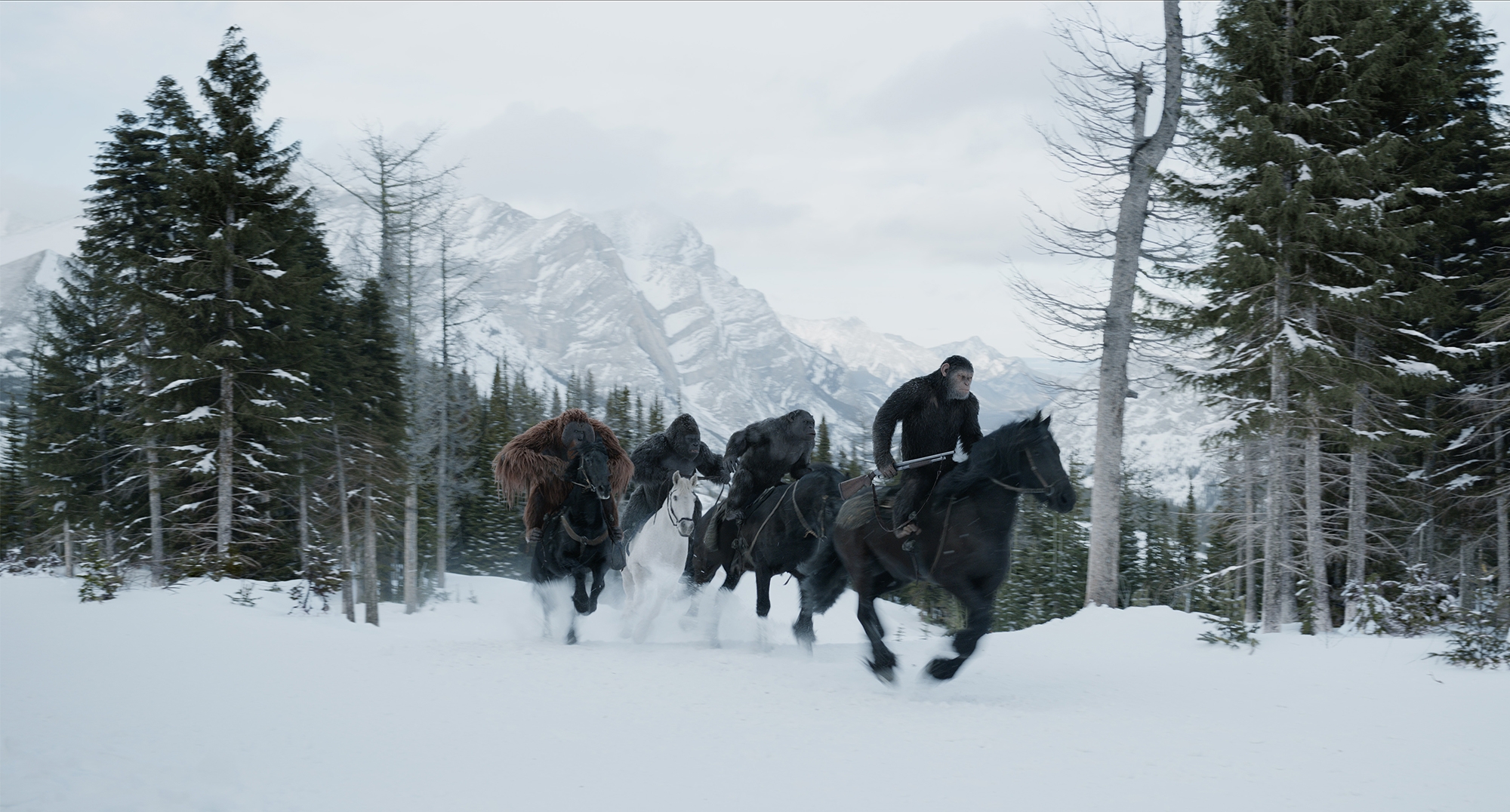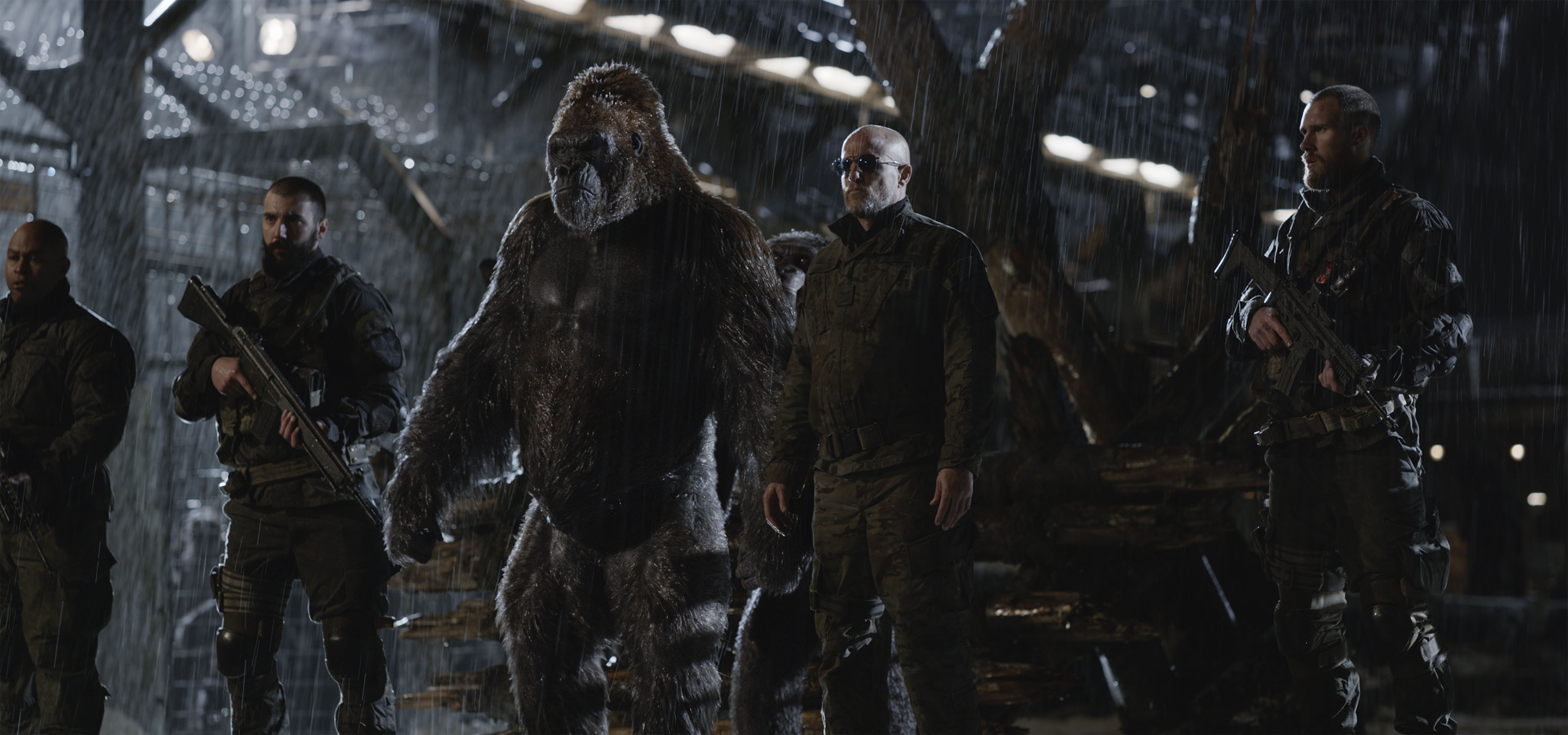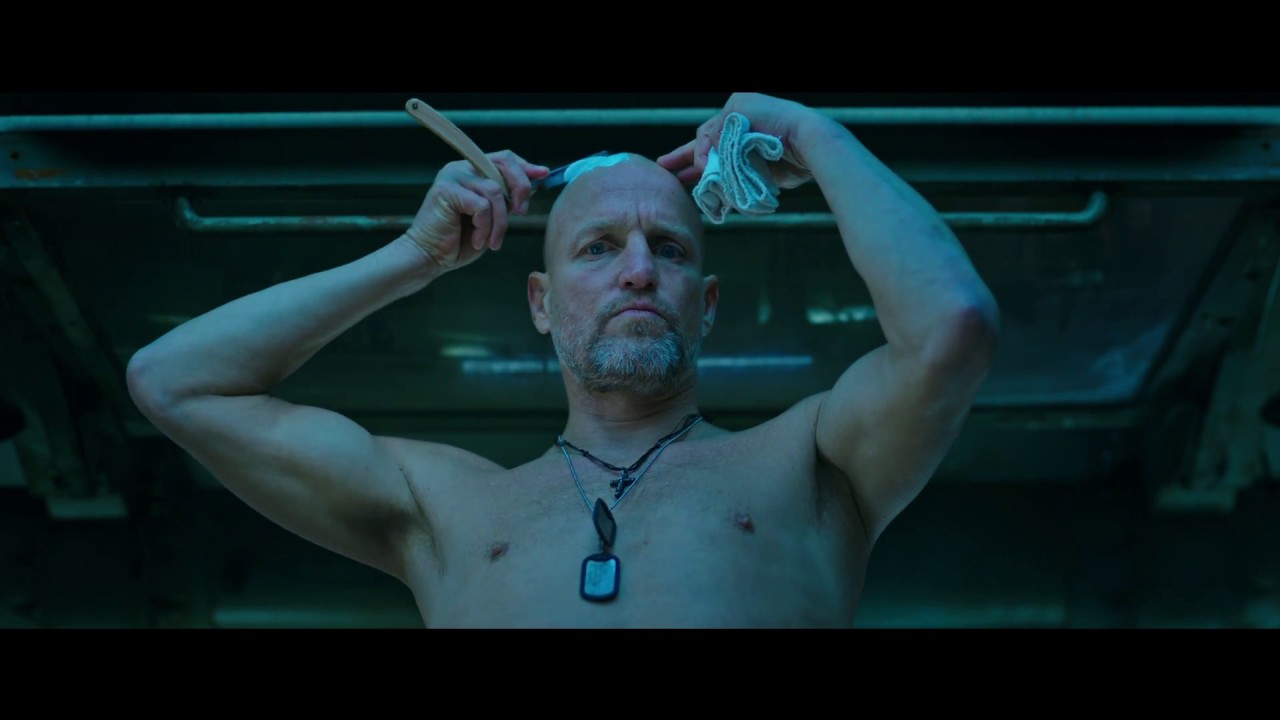 War for the Planet of the Apes (2017)
Directed by Matt Reeves
Rated PG-13
Reviewed by James Rosario on July 22, 2017
War for the Planet of the Apes (2017)
Directed by Matt Reeves
Rated PG-13
Reviewed by James Rosario on July 22, 2017

How you feel about the latest installment in the
Planet of the Apes reboot series may depend, at least somewhat, on how you feel about talking monkeys who ride horses and occasionally shoot guns. If this is something you can get behind (I know I can), then
War for the Planet of the Apes is sure to be a big hit for you. If not, well, maybe not so much. But, I would still encourage you to see it on the strength of the effects and story alone. It’s really quite a feat.
The title (and the trailers) suggests epic battles between humans and apes, but this is not a war film, per se. It’s a western, a science fiction allegory, an escape film, and a morality tale all together, under the guise of a war film. There are battles, don’t worry, but there’s a whole lot more too.

Caesar (Andy Serkis) and his band of apes have been attempting to coexist peacefully with humans for many years. The humans, led by The Colonel (Woody Harrelson), have different ideas on how peace can be achieved. After his family is murdered, Caesar and some ape companions head out in pursuit of the Colonel. Revenge is on his mind, as he plans on making those who are guilty pay for what they have done.
Herein lies one of the more interesting genre elements of the film: the western. Well-crafted westerns are among the best that cinema has to offer, and like sci-fi, often deceptively deal in high concept material. Here we have an ape who seeks revenge against the “animal” who killed his family, and in doing so, discovers (or possibly, in this case, re-discovers) his own “humanity.”

Redemption and revenge are concepts often central to western films, and writer/director Matt Reeves, along with co-writer Mark Bomback, have them in spades. It’s a classic genre with built in tropes, and
War is a classic telling of a familiar story, and done so, largely, in a conventional style (obvious differences in character appearance aside, but don’t forget, Kurosawa and Lucas had similar approaches). Add to that the use of the genre’s classic and familiar visual style, and you’ve got the makings of the best western to come out in some time. Apes aside, this is something John Ford could have tackled.

But
War is also a science fiction film. Like westerns, the best of sci-fi has always tackled contemporary issues by simply placing them in an unfamiliar setting. It allows the viewer (or reader, or gamer, or whatever) to identify with problems in our society under the cloak of escapist entertainment. It’s kind of deceptive that way.
War may not be set in space, and there may not be an alien menace, robots, or time travel (yet, anyway), but these ape movies, all of them, past and present, are still, at their heart, sci-fi films. The themes of the latest installment—whose roots go back to 1968 on film, and to 1963 in print—haven’t changed all that much from its predecessors. Man is destructive, and left unchecked, has the capacity to destroy itself. This is evidenced by Charlton Heston’s famous sand beating scene in front of the Statue of Liberty in the original 1968 film, and by the infighting the last survivors of the human race insist on in
War.
It seems that, no matter the circumstances, people need to fight other people. Division is a killer, and in a direct nod to contemporary issues, the Colonel even has the apes building a giant wall. I wonder what that could be in reference to?

And then there’s the “war” in
War for the Planet of the Apes. As I’ve said, this is not a straight up war movie, but the influence of Vietnam era motifs is hard to miss. The easiest and most recognizable of these is
Apocalypse Now (1979). Reeves makes no attempt at hiding this, as he directly references the film with graffiti that reads “Ape-pocalypse Now.”

Harrelson’s Colonel is an obvious homage to Brando’s Colonel Kurtz, but it works. Why not? I say wear your influences on your sleeve. Trying to hide them just makes you look like an ass. Also on display are slogans painted on helmets ala 1987’s
Full Metal Jacket (with one reading “Bedtime for Bonzo,” which I’ll let you google on your own time), and nods to
Platoon (1986) and
Hamburger Hill (1987).
War films, especially Vietnam-era ones, tend to speak for themselves thematically (the inhumanity of man, and so on), and this is no different, except that it also has talking monkeys.
The cast, let by Serkis, is much better than it even needs to be, considering the motion capture aspect its principle actors. But, humans and apes alike hit their marks just right. Steve Zahn, as Bad Ape, is a much-welcomed addition. Zahn is an underrated comedic actor, and his genuinely funny performance offers a needed respite from the harsh realities faced by our protagonists.

Other than being a bit heavy handed and a little too on the nose at times,
War works impressively well. The visual effects are among the best I’ve ever seen on film, and that’s no joke. This alone should get you out to see the film. It also happens to have the added benefit of a story that’s equal parts classic allegory and warning, which is exactly what it should be. It’s an easy second best in the pantheon of
Apes movies (the original 1968 film is just too bonkers and amazing to top, sorry). It’s weird that after nearly 40 years of movies about a planet full of super intelligent apes that there’s anything left to tell. And maybe weirder, and a bit disheartening, that these apes should still need to tell us anything at all.
War for the Planet of the Apes is playing now in Asheville theaters.
For more film reviews, plus record reviews, podcasts, and more, please visit
THE DAILY ORCA.